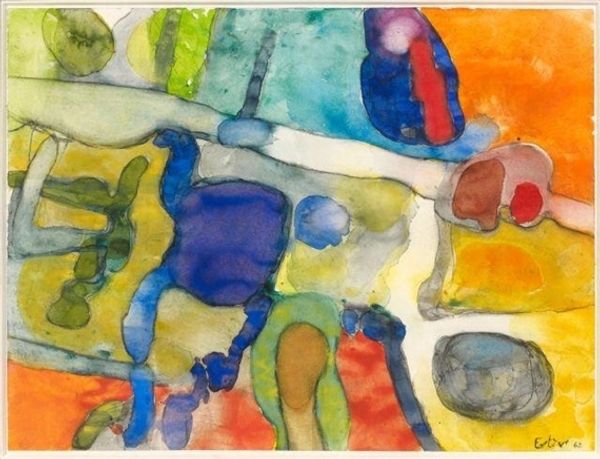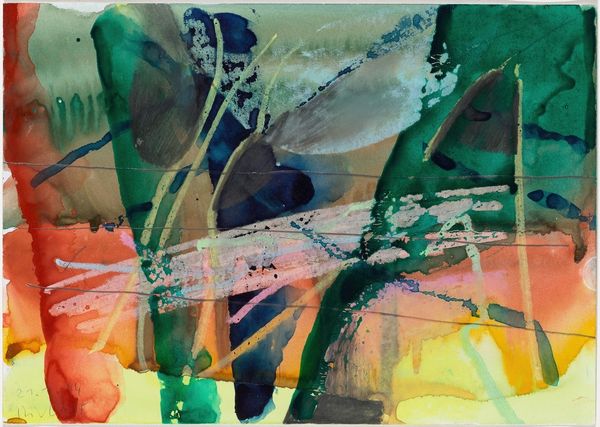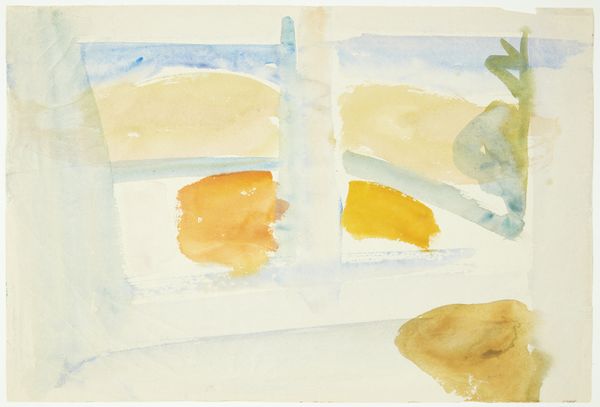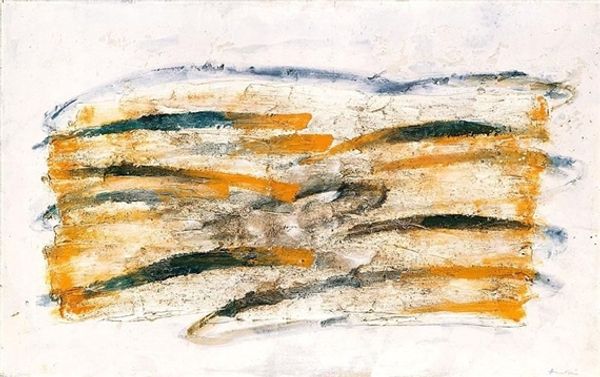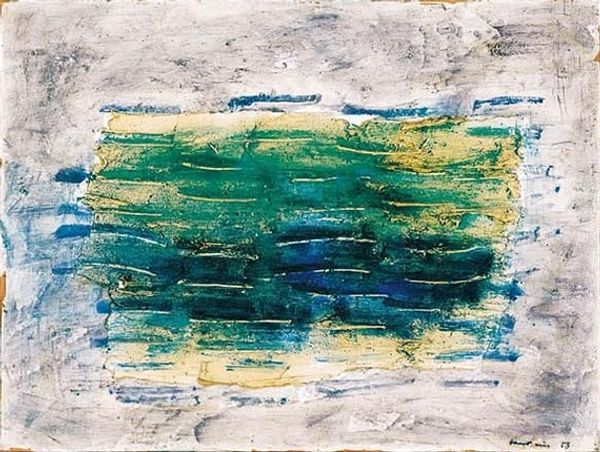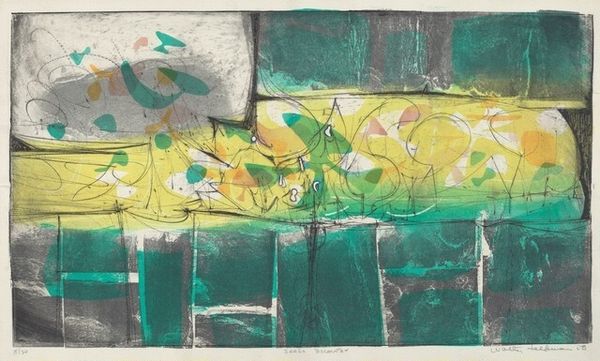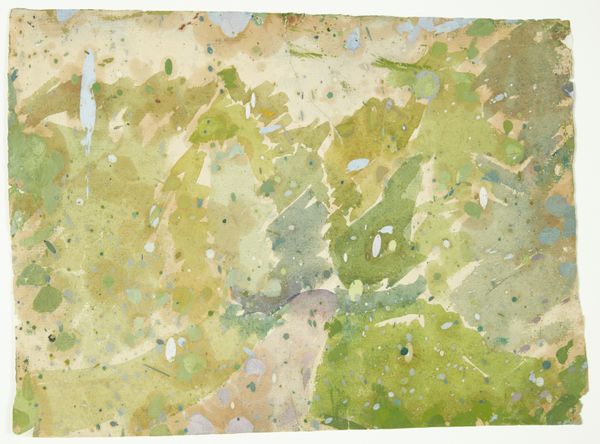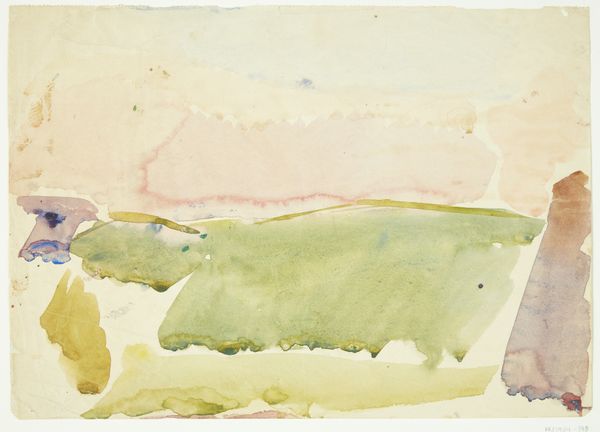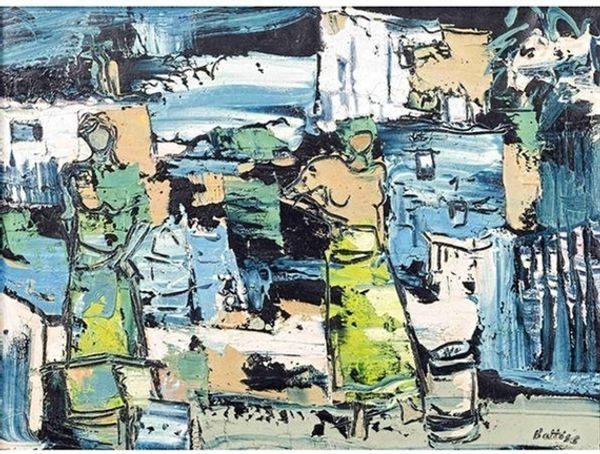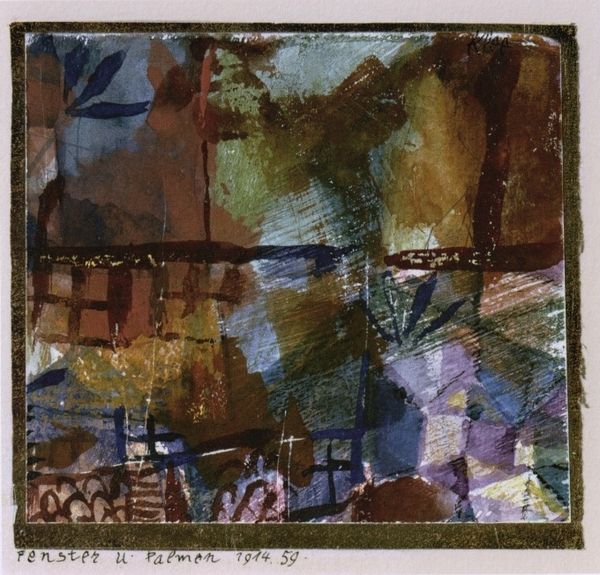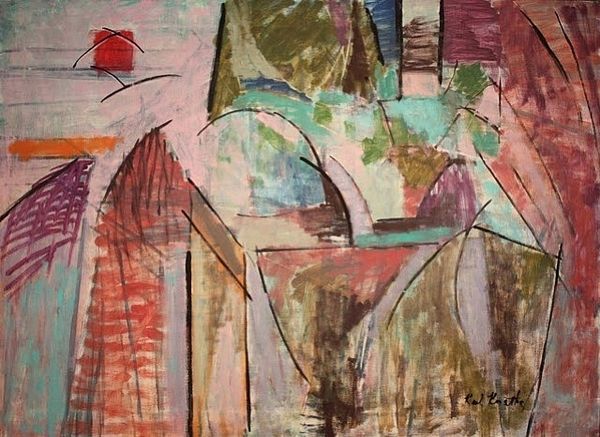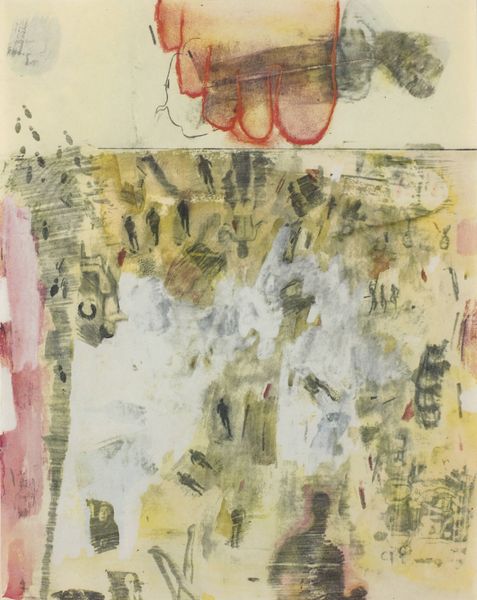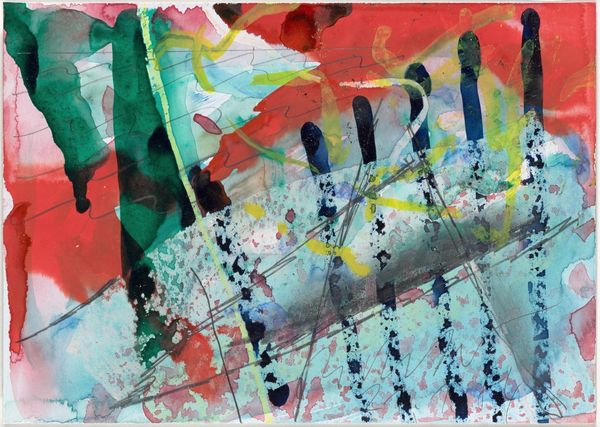
painting, watercolor
#
contemporary
#
water colours
#
painting
#
landscape
#
watercolor
#
abstraction
#
watercolor
Copyright: Aurel Cojan,Fair Use
Curator: Immediately, this watercolour evokes such a sense of tranquil reflection to me. It is simple and subdued in its composition, the kind of setting that fosters conversation. Editor: Indeed. We’re looking at "Benches in the Park" created in 1964 by Aurel Cojan. A very peaceful watercolour piece. Let's unpack the making of this piece, especially considering the artistic trends of the time. Watercolours, often dismissed as preliminary sketches, held a complex place in mid-century artmaking. Curator: Absolutely, the fact that the artist chose watercolor here is vital, watercolours as a medium are ofted tied to the feminine, pastoral. It might represent his effort in negotiating those categories by evoking feelings around nature, and peace in his works through a ‘feminine touch’. The seating element makes it evermore human in the most ordinary sense of the word. Who gets to rest and recreate is so relevant here too. Editor: Precisely, the access and implied privilege. Consider how watercolours are industrially produced—paper, pigments, brushes—all readily available, but also embodying a certain class dimension to the art. I am particularly intrigued by Cojan's decision to portray a park. A manufactured space in many senses. Curator: Yes, the park becomes a stage! Think about gender too: who are those two figures, barely discernible, sharing the bench? What conversations might they be having in that precise political moment? A park offers, sometimes falsely, the idea of democratic participation to various bodies but as it relates to that exact bench is vital, as public/private spheres collide in one place! Editor: Right. It's important we look into Cojan's other pieces as well, the specific papers and brands used to create. Do they suggest something about economic constraints? The rapid drying time dictates that each section is quickly thought through and applied in a performative way that is uncharacteristic to more methodical oil painting techniques. Curator: Fascinating insights. In terms of his time and positioning it with regards to current socio-economic issues in present-day Romania makes that very important element here. Even that park is marked by identity, inclusion, and exclusion in Romania during his lifetime. Editor: Well, the park offers a physical reminder that his art emerges not from thin air, but from very particular spaces, resources, and relationships that reflect larger processes of economic development. The medium and location speak together. Curator: Thanks, the bench now is seen for something much larger, through your reflections on class, location, materiality, we have an opening into many different historical experiences of belonging and the conditions surrounding Aurel Cojan's Benches in the Park. Editor: I agree. Materiality gives context and opens our minds in many directions.
Comments
No comments
Be the first to comment and join the conversation on the ultimate creative platform.
